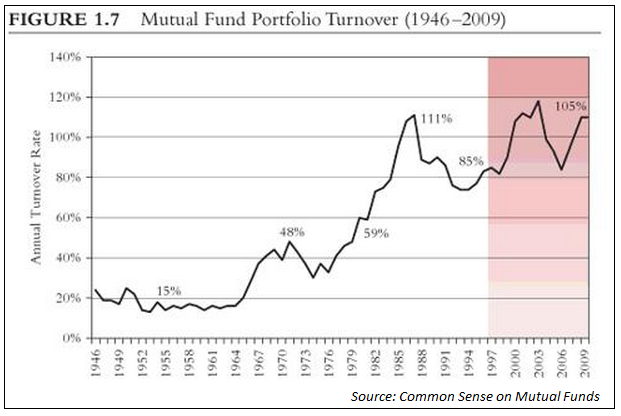Mutual Fund Costs
Post on: 9 Август, 2015 No Comment

Costs are the biggest problem with mutual funds. These costs eat into your return, and they are the main reason why the majority of funds end up with sub-par performance.
Whats even more disturbing is the way the fund industry hides costs through a layer of financial complexity and jargon. Some critics of the industry say that mutual fund companies get away with the fees they charge only because the average investor does not understand what he/she is paying for.
Fees can be broken down into two categories:
1. Ongoing yearly fees to keep you invested in the fund.
2. Transaction fees paid when you buy or sell shares in a fund (loads ).
The Expense Ratio
The ongoing expenses of a mutual fund is represented by the expense ratio. This is sometimes also referred to as the management expense ratio (MER). The expense ratio is composed of the following:
• The cost of hiring the fund manager(s) Also known as the management fee, this cost is between 0.5% and 1% of assets on average. While it sounds small, this fee ensures that mutual fund managers remain in the countrys top echelon of earners. Think about it for a second: 1% of 250 million (a small mutual fund) is $2.5 million fund managers are definitely not going hungry! Its true that paying managers is a necessary fee, but dont think that a high fee assures superior performance. (Find out more in Will A New Fund Manager Cost You? )
• Administrative costs These include necessities such as postage, record keeping, customer service, cappuccino machines, etc. Some funds are excellent at minimizing these costs while others (the ones with the cappuccino machines in the office) are not.
• The last part of the ongoing fee (in the United States anyway) is known as the 12B-1 fee. This expense goes toward paying brokerage commissions and toward advertising and promoting the fund. Thats right, if you invest in a fund with a 12B-1 fee, you are paying for the fund to run commercials and sell itself! (For related reading, see Break Free Of Fees With Mutual Fund Breakpoints .)
On the whole, expense ratios range from as low as 0.2% (usually for index funds) to as high as 2%. The average equity mutual fund charges around 1.3%-1.5%. Youll generally pay more for specialty or international funds, which require more expertise from managers.
Are high fees worth it? You get what you pay for, right?
Wrong.
Just about every study ever done has shown no correlation between high expense ratios and high returns. This is a fact. If you want more evidence, consider this quote from the Securities and Exchange Commissions website:
Higher expense funds do not, on average, perform better than lower expense funds.
Loads, A.K.A. Fee for Salesperson
Loads are just fees that a fund uses to compensate brokers or other salespeople for selling you the mutual fund. All you really need to know about loads is this: dont buy funds with loads.
In case you are still curious, here is how certain loads work:
• Front-end loads These are the most simple type of load: you pay the fee when you purchase the fund. If you invest $1,000 in a mutual fund with a 5% front-end load. $50 will pay for the sales charge, and $950 will be invested in the fund.
• Back-end loads (also known as deferred sales charges) These are a bit more complicated. In such a fund you pay the a back-end load if you sell a fund within a certain time frame. A typical example is a 6% back-end load that decreases to 0% in the seventh year. The load is 6% if you sell in the first year, 5% in the second year, etc. If you dont sell the mutual fund until the seventh year, you dont have to pay the back-end load at all.
A no-load fund sells its shares without a commission or sales charge. Some in the mutual fund industry will tell you that the load is the fee that pays for the service of a broker choosing the correct fund for you. According to this argument, your returns will be higher because the professional advice put you into a better fund. There is little to no evidence that shows a correlation between load funds and superior performance. In fact, when you take the fees into account, the average load fund performs worse than a no-load fund. (For related reading, see The Lowdown On No-Load Mutual Funds .)














